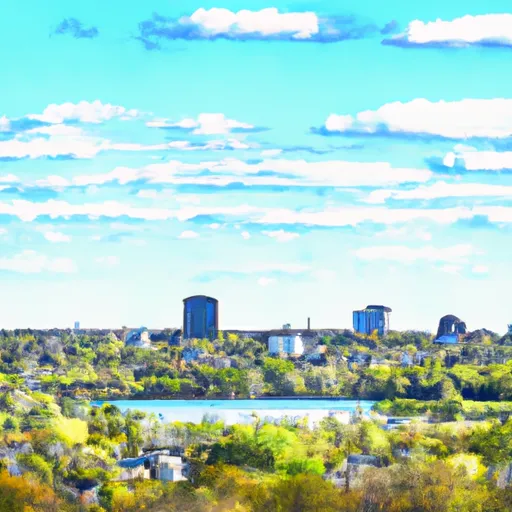-
 Snoflo Premium
Snoflo Premium
Get unlimited access to all our content
With no Ad interruptions! - Start Your Free Trial Login with existing account
Hoyt-Lakes
Eden Index
Climate
4.6
•
Recreation
5.0
•
Community
•
Safeguard
3.6/10

Hoyt Lakes is a small city located in St. Louis County, Minnesota. Situated in the northern part of the state, it experiences a continental climate characterized by cold winters and relatively mild summers. Average temperatures in winter range from 0°F (-18°C) to 20°F (-7°C), while summer temperatures average between 60°F (16°C) and 80°F (27°C). The region receives abundant snowfall during the winter months, making it a popular destination for winter sports enthusiasts.
Hoyt Lakes is surrounded by numerous lakes and rivers, including the beautiful White Iron Lake and the Embarrass River. These water bodies contribute to the hydrology of the area, providing opportunities for fishing, boating, and swimming. The area is known for its pristine wilderness, offering outdoor enthusiasts a chance to explore the vast Superior National Forest and hike through scenic trails.
Outdoor recreation opportunities in Hoyt Lakes extend beyond water activities. The area boasts excellent opportunities for hunting, camping, and wildlife viewing, with an array of game species including white-tailed deer, black bear, and small game. With its diverse landscape and natural beauty, Hoyt Lakes provides an ideal setting for those seeking to immerse themselves in nature and engage in various outdoor activities.
What is the Eden Index?
The Snoflo Eden Index serves as a comprehensive rating system for regions, evaluating their desirability through a holistic assessment of climate health, outdoor recreation opportunities, and natural disaster risk, acknowledging the profound impact of these factors on livability and well-being.
Climate Health Indicator (CHI): 4.6
Hoyt-Lakes receives approximately
706mm of rain per year,
with humidity levels near 83%
and air temperatures averaging around
3°C.
Hoyt-Lakes has a plant hardyness factor of
3, meaning
plants and agriculture in this region thrive during a short period during spring and early summer. Most
plants will die off during the colder winter months.
By considering the ideal temperature range, reliable water supplies, clean air, and stable seasonal rain or snowpacks, the Climate Health Indicator (CHI) underscores the significance of a healthy climate as the foundation for quality living.
A healthy climate is paramount for ensuring a high quality of life and livability in a region, fostering both physical well-being and environmental harmony. This can be characterized by ideal temperatures, reliable access to water supplies, clean air, and consistent seasonal rain or snowpacks.
Weather Forecast
Streamflow Conditions
St. Louis
Area Rivers
St. Louis
Snowpack Depths
St. Louis
Reservoir Storage Capacity
St. Louis
Groundwater Levels
Recreational Opportunity Index (ROI): 5.0
The Recreational Opportunity Index (ROI) recognizes the value of outdoor recreational options, such as parks, hiking trails, camping sites, and fishing spots, while acknowledging that climate plays a pivotal role in ensuring the comfort and consistency of these experiences.
Access to outdoor recreational opportunities, encompassing activities such as parks, hiking, camping, and fishing, is crucial for overall well-being, and the climate plays a pivotal role in enabling and enhancing these experiences, ensuring that individuals can engage in nature-based activities comfortably and consistently.
Camping Areas
| Campground | Campsites | Reservations | Toilets | Showers | Elevation |
|---|---|---|---|---|---|
| Cadotte Lake | 27 | 1,657 ft | |||
| Fenske Lake | 20 | 1,507 ft | |||
| Amnicon Falls | 35 | 833 ft | |||
| Bear Head Lake State Park | 75 | 1,523 ft | |||
| Gordon Dam | None | 1,023 ft | |||
| Totogatic Park | 75 | 1,025 ft | |||
| Riverside Landing - St. Croix National Scenic River | None | 896 ft | |||
| Namekagon Trail Bridge - St. Croix National Scenic River | None | 933 ft | |||
| Heritage City Park | 18 | 1,439 ft | |||
| Fishermans Point City Campground | 70 | 1,441 ft |
Nearby Ski Areas
Catastrophe Safeguard Index (CSI):
The Catastrophe Safeguard Index (CSI) recognizes that natural disaster risk, encompassing floods, fires, hurricanes, and tornadoes, can drastically affect safety and the overall appeal of an area.
The level of natural disaster risk in a region significantly affects safety and the overall livability, with climate change amplifying these risks by potentially increasing the frequency and intensity of events like floods, fires, hurricanes, and tornadoes, thereby posing substantial challenges to community resilience and well-being.
Community Resilience Indicator (CRI):
The Community Resilience Indicator (CRI) recognizes that education, healthcare, and socioeconomics are crucial to the well-being of a region. The CRI acknowledges the profound impact of these elements on residents' overall quality of life. By evaluating educational resources, healthcare accessibility, and economic inclusivity, the index captures the essential aspects that contribute to a thriving community, fostering resident satisfaction, equity, and social cohesion.

